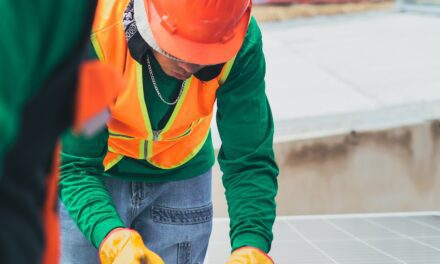A New Zealand solar energy installer is warning that electrifying New Zealand—EV vehicles, trains and digital technologies—while building thousands of new homes that cannot generate their own renewable energy is foolhardy in light of Transpower’s warnings about strain on the national power grid.
The director of Vital Solar, a leading Auckland solar energy specialist, Cameron Dick, said that even if new buildings were provisioning for renewable energy, there are not enough trained installers to meet even existing demand.
“Even during the wettest winter months, Transpower urged Kiwis to ease up on electricity consumption. At the same time, there is a push to electrify half of the country’s vehicle fleet within the next eight years–yet current Homestar energy ratings do not even mention renewable energy.”
More sustainable electricity generation will also be critical if New Zealand is to reach its 2030 zero carbon goals. To achieve this, 100 per cent of imported cars would need to be electric or hybrid by that date – which would be a considerable jump from the total of 3 per cent imported in 2019.
“New Zealand needs a better framework for training local solar installers, a mandatory source of ethically manufactured solar energy products, better education of the public and renewable energy should be a standard requirement for new structures, particularly homes.”
The United Kingdom is in the process of mandating that every home new home has provision for an electric vehicle and solar energy infrastructure, and New Zealand urgently needs to follow their example.
He had the following advice for homeowners considering placing solar panels on their houses:
1. Check the warranty
Not all solar panels are created equal. And that goes for the warranties as well. In general, there are two types of warranties, Dick said.
“The first type is a product warranty, and the second is a performance warranty (manufacturers state what the performance will be over a certain time period)—about 90 per cent output for up to 10 years and 80 per cent output for up to 25 years. The third is a labour or service guarantee, meaning the manufacturer or installer will replace or repair the panel if a defect occurs (not all manufacturers offer this).
“Solar panels are fragile things, so getting a warranty is crucial,” Dick said.
2. Do your research
The sheer number of solar panel products on the market expands yearly, so it is worth shopping around for panels that best fit a home’s design and build. But Dick advised performing due diligence on the choice of installers to avoid the “cowboys.”
“Research an installer’s track record, reviews, how long they have been in business, their training programme and the ethos of the company. A positive sign is if they belong to a group like SEANZ (Sustainable Energy Association of New Zealand),” Dick said.
3. Understand your needs
Powering an entire house or capturing and storing a bit of energy for charging digital devices in the evening are two very different motivations for installing solar panels. Do you want an off-grid system or one that is tied into the grid). It is essential to know what system will supply adequate power for a household without underserving or overserving.
“Calculate the energy consumption of your house over the last six to 12 months. This will help decide if you need a 3- or 8-kilowatt panel, potentially saving thousands of dollars annually,” Dick said.
If enough homes are also equipped with solar panels, the amount of energy that could be generated will lighten the load on the grid.
Yet to get there, New Zealand needs a better framework to train solar installers. Increasing the effort to educate homeowners about the available options for home solar electricity systems is also essential.
He said while people are incentivised to build energy-efficient homes to lower their power costs, there need to be more trained solar installers to meet the rising demand for panels.
For more information see https://vitalsolar.co.nz/













